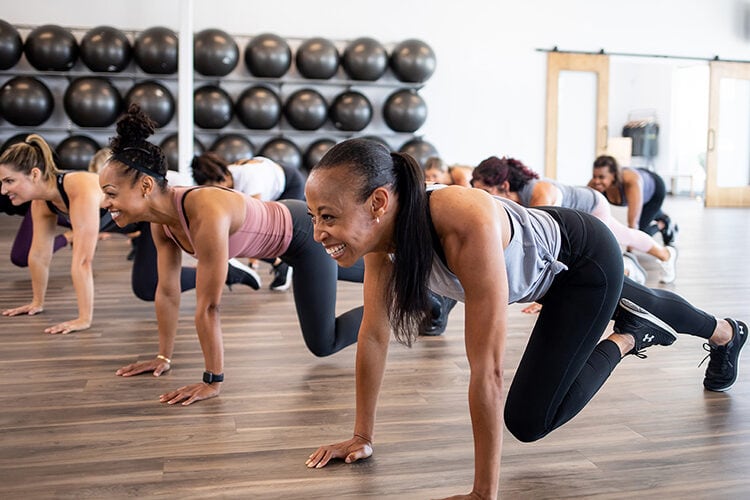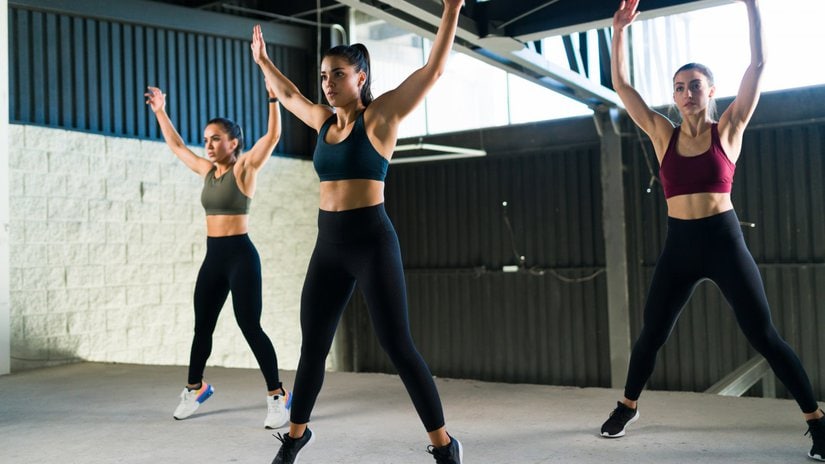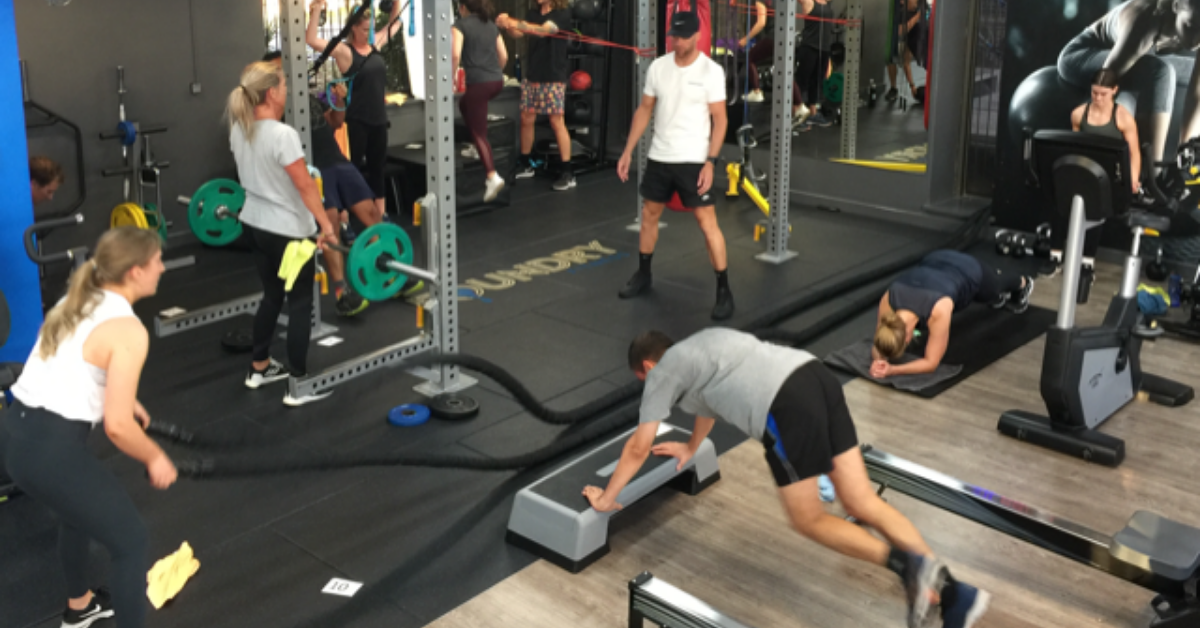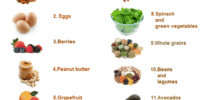What Is High Intensity Interval Training

Definition: What Is High Intensity Interval Training
High intensity interval training (HIIT) is a form of cardiovascular exercise that alternates short periods of intense activity with periods of rest or lower intensity activity. HIIT workouts typically involve performing exercises such as sprinting, jumping jacks, or burpees at maximum effort for a set amount of time, followed by a short period of rest or active recovery.
The cycle is repeated multiple times, typically for 20-30 minutes. HIIT is known for its ability to improve cardiovascular health, increase fat loss, and improve muscle strength and endurance in a shorter amount of time compared to traditional steady-state cardio workouts.
Exercise is a crucial part of leading a healthy lifestyle, and high intensity interval training (HIIT) is one popular way to get in shape. HIIT involves short bursts of intense activity followed by brief periods of rest. It’s an effective way to burn calories and improve your fitness level quickly and efficiently. But what exactly is HIIT, and how does it work? In this article we’ll take an in-depth look at HIIT and explore the benefits it offers.
Studies have found that HIIT can help you lose weight faster than other forms of exercise, while also improving your cardiovascular health. It’s also incredibly versatile: you can do HIIT with almost any type of exercise – from running to swimming to jumping rope – making it perfect for people with busy schedules or limited space for equipment.
HIIT has been proven to improve mental focus and clarity, as well as reduce stress levels. So not only will you be getting fit in less time, but you’ll be feeling better mentally too! In this article we’ll dive deeper into what makes HIIT so effective, so keep reading to find out more!
Explanation Of High Intensity Interval Training (HIIT)
High intensity interval training (HIIT) is a type of exercise that involves alternating between short bursts of intense activity and rest. It’s designed to push your body to its limits, so you can get maximum benefits in minimal time. HIIT can be used for all types of exercise, from cardio to resistance training. The idea is that you work at a high intensity for a short period of time, then rest for a few seconds before doing it again. This helps you burn more calories and improve your cardiovascular fitness levels faster than steady-state cardio workouts. HIIT also triggers the production of hormones responsible for fat loss and muscle growth. Therefore, it’s an effective way to lose weight and build muscle in a shorter amount of time.
Benefits Of HIIT
It is no surprise that High Intensity Interval Training (HIIT) has become increasingly popular among fitness enthusiasts in the last few years. From the previous section, we know that HIIT involves short bursts of intense exercise followed by rest periods to enhance overall physical performance. To get the most out of your HIIT workout, it’s important to understand its many benefits.
First and foremost, HIIT workouts are incredibly efficient and effective. They can last as little as 15 minutes, but still provide amazing results. Plus, you can do these workouts almost anywhere – at home or in a gym – with minimal equipment. And since the intensity is so high during each interval, you burn many more calories than a regular workout session. This means that you can reach your fitness goals faster with HIIT than other types of cardio.
Another great benefit of HIIT is its ability to increase your metabolism for hours after you’ve finished exercising. Your body continues to burn calories throughout the day due to the intense nature of these workouts. Additionally, it’s been proven to improve stamina and endurance levels over time so that you can push yourself harder during each session and make even faster progress towards reaching your fitness goals.
Finally, HIIT is also an excellent way to break through any plateaus you may be experiencing in your current fitness routine because it targets different muscle groups in new ways. This helps keep things interesting while providing an intense calorie-burning workout every time!
How To Do HIIT
High Intensity Interval Training (HIIT) is a form of exercise characterized by short bursts of intense activity followed by periods of rest or low-intensity activity. It is one of the most effective and efficient workout techniques for burning fat and improving cardiovascular fitness. To do HIIT, you need to choose activities that you can do at high intensity for short bursts such as sprinting, jump squats, burpees, mountain climbers or skipping. Start with a warm up to prepare your body for the upcoming intense exercise. Then switch between 30 second to 1 minute intervals of high intensity exercises with 15-30 second breaks in between. Do this for 8-10 rounds and finish with a cool down to bring your heart rate back down.
The key to performing HIIT correctly is to make sure your body is working at its maximum capacity during the work intervals and then allowing it enough time during the rest intervals for recovery. This helps you push beyond your limits and achieve greater results in less time than traditional cardio workouts. With regular practice, HIIT can help you improve strength, endurance and overall physical fitness faster than ever before!
Precautions And Considerations
High Intensity Interval Training (HIIT) is a great way to improve fitness, but there are some important precautions and considerations. Firstly, it’s important to make sure you warm up properly and cool down afterwards. Warming up helps get your body ready for the intensity of HIIT and can help prevent injury. Cooling down afterwards helps your body recover and allows it to return back to its resting rate gradually.
It’s also essential to ensure that the intensity of HIIT is appropriate for you. Everyone has different levels of fitness, so it’s important to start off at a level that is comfortable for you, then gradually increase the intensity as your fitness improves. This will help you get the most out of your HIIT sessions without feeling overwhelmed or risking injury.
It’s also important to consult with a doctor before starting any new exercise routine. This will help rule out any existing health conditions that may prevent or limit HIIT from being beneficial for you. A doctor can also provide advice on how best to perform HIIT safely based on your individual needs and circumstances.
Incorporating HIIT Into A Fitness Routine
Having discussed the precautions and considerations surrounding high intensity interval training, it’s now time to look at how to incorporate HIIT into a fitness routine. To begin with, it’s important to understand that HIIT should be performed two or three days per week. Exercise sessions are typically between 10-30 minutes in duration, and should be tailored to individual fitness levels.
In terms of what exercises to include in HIIT routines, running, cycling, rowing or using an elliptical machine are all suitable options. It’s also possible to incorporate bodyweight exercises such as burpees, jump squats and box jumps. Taking regular rest periods between intervals is essential for allowing the body time to recover and get the most benefit from the training session.
HIIT can be a great way of achieving improved cardiovascular health while also pushing yourself outside of your comfort zone. By incorporating this form of exercise into your routine you will benefit from improved fat loss as well as increased energy levels throughout the day.
What Are Examples Of High Intensity Interval Training?
High intensity interval training (HIIT) is gaining in popularity as a way to quickly and effectively get fit. HIIT involves short bursts of intense exercise, followed by rest periods. It can be used for any type of exercise, from running and swimming to weight training and CrossFit. An example of HIIT might look like this: sprinting for 30 seconds, walking for 60 seconds, then repeating the cycle 10 times.
HIIT has been linked to improved cardiovascular fitness, increased energy levels, and greater fat loss than traditional aerobic exercise. Research suggests that HIIT is an effective way to burn calories in less time than steady-state cardio workouts. It also increases the body’s production of human growth hormone (HGH), which helps build muscle mass and boost metabolism. As such, it can be used as an effective tool to kickstart a fitness routine or break through plateaus in progress.
What Are 3 Types Of HIIT Workouts?
High intensity interval training (HIIT) is a type of workout that involves alternating between periods of high intensity and low intensity exercise. HIIT can be done using any type of exercise, ranging from running to weightlifting. Here are 3 types of HIIT workouts to help you get started:
- Tabata Intervals: These consist of 8 sets of 20-second bursts of intense exercise followed by 10 seconds of rest. This type of HIIT is great for those who want a quick and effective workout in minimal time.
- Hills and Sprints Intervals: This type of HIIT alternates between sprints on an incline and jogging at a steady pace. It works best when done outdoors and uses the natural terrain to challenge your body.
- Timed Intervals: With this type of HIIT, you choose the length of the intervals instead of the intensity level. These can range from 30 seconds to 10 minutes long, depending on what your fitness goals are.
No matter which type you choose, HIIT will help you build strength, burn fat, and improve your overall health and fitness levels in no time!
Is A 20 Minute HIIT Workout Enough?
Irony can be a powerful tool when used correctly, and it’s certainly the case when it comes to whether a 20 minute HIIT workout is enough. On the one hand, 20 minutes of intense exercise certainly sounds manageable and achievable for most people — but on the other hand, is that really enough to get the desired results?
The answer is both yes and no. Yes, in the sense that any exercise is better than nothing at all when it comes to improving physical fitness. However, if someone is looking for more noticeable or dramatic results, 20 minutes of HIIT may not be enough. It depends on the individual’s goals and their current level of fitness. A 20 minute workout may be ideal for those who are just starting out with HIIT, but more experienced athletes may require longer bouts of exercise to reach their targets.
What is the best high intensity interval training?
There is no one “best” high intensity interval training (HIIT) workout, as the effectiveness of HIIT can vary based on individual goals, fitness level, and personal preferences. However, a good HIIT workout typically involves a combination of intense, full-body exercises performed for short periods of time with brief rest periods in between.
The workout should be challenging enough to elicit a high heart rate and cause a significant metabolic response, but also allow for proper form and technique to prevent injury.
Is HIIT good for losing belly fat?
Is cardio and HIIT the same thing?
Cardiovascular exercise (cardio) and high intensity interval training (HIIT) are not the same thing, although HIIT can be a type of cardiovascular exercise. Cardiovascular exercise is any type of activity that raises the heart rate and increases oxygen consumption for an extended period of time, typically 20 minutes or more. This can include activities such as jogging, cycling, or swimming, performed at a moderate intensity for a longer duration.
HIIT, on the other hand, involves short bursts of intense exercise alternated with periods of rest or lower intensity exercise, and typically lasts between 10-30 minutes. While both types of exercise can improve cardiovascular health, HIIT is typically more intense and may be more effective for fat loss and increasing metabolic rate compared to traditional steady-state cardio workouts.
Is HIIT better than gym?
Conclusion
In conclusion, HIIT is an effective and efficient way to improve overall fitness. It has many benefits such as improved cardiovascular health, increased calorie burning, and improved muscular endurance. With proper execution, HIIT can be a great addition to any fitness routine.
However, it is important to remember that “more isn’t always better” when it comes to HIIT.
It’s important to start slowly and gradually increase the intensity of your workout. If you feel any pain or discomfort during your workout, take a break or stop altogether. It’s also important to listen to your body and make sure you are getting enough rest between workouts so you don’t overtrain or injure yourself.
I believe that everyone can benefit from incorporating HIIT into their fitness routine in some form or another. Whether it’s a 20 minute session or something more intense like Tabata training, there are plenty of options for people who want to get in a good workout without spending hours at the gym. So go out there and #HIITit!











